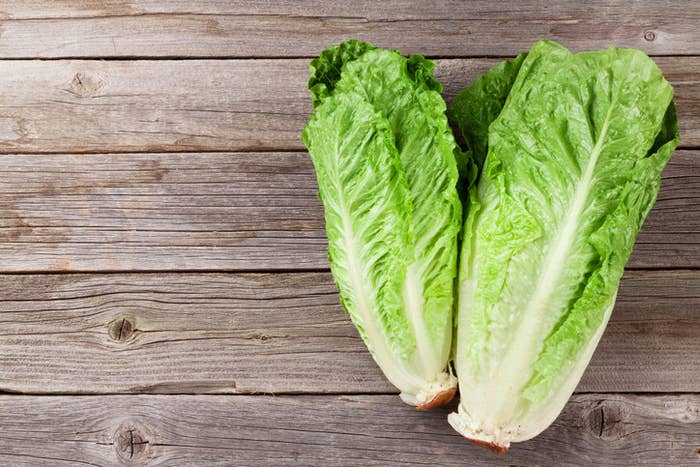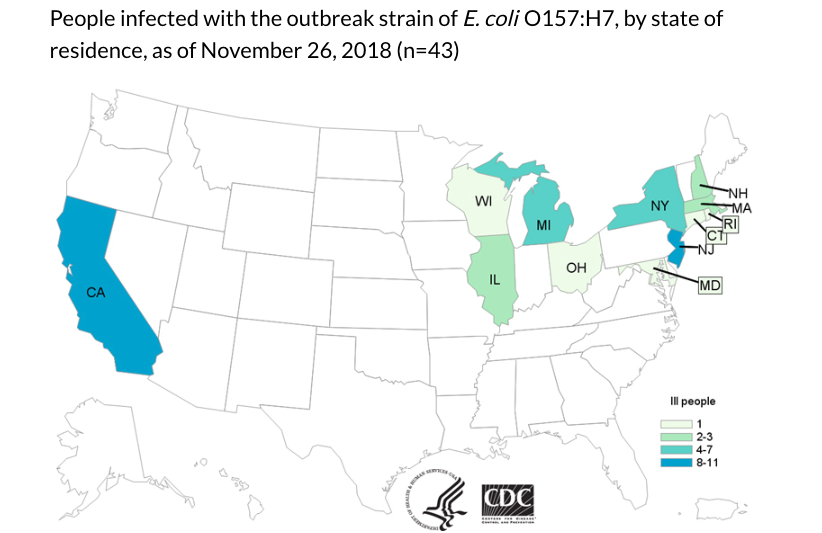There's an ongoing outbreak of E. coli–related illness linked to romaine lettuce, and 43 people in 12 states have gotten sick.

Last week the CDC cautioned people not to eat romaine lettuce of any kind because it might be contaminated with a dangerous type of E. coli bacteria.
However, the CDC reported on Monday that some types of romaine lettuce are safe to eat because they've traced the contamination to the central and northern coastal growing regions in California.
That means that romaine lettuce from other areas — including Florida, Mexico, and the desert growing regions of Yuma, Arizona — is safe for consumption. And romaine from other parts of California is fine too, according to the CDC, including the desert growing regions near Imperial County and Riverside County. Hydroponic or greenhouse-grown romaine lettuce has not been implicated in the outbreak.
The tricky part might be identifying the growing region, as not all romaine lettuce has that information on the label. If the food label doesn't explicitly say it was grown in a "safe" region, then throw it away, the federal agency said.
Labels will be added to romaine lettuce products, according to the CDC, but "it may take some time before these labels are available."
"If the romaine lettuce is not labeled with a harvest growing region, do not buy, serve, sell, or eat it," they said in a food safety alert. The warning includes all types of romaine, including whole heads and hearts of romaine, bagged mixed salads, and baby romaine, spring mix, and Caesar salads.
So far, 43 people in 12 states have gotten sick, and of those, 16 required hospitalization. The type of bacteria implicated in the outbreak is E. coli O157:H7, which produces a toxin called Shiga.
The Shiga toxin causes severe, sometimes bloody diarrhea and can lead to hemolytic uremic syndrome, which is damage to the blood vessels in the kidney that can lead to kidney failure. Other symptoms of an E. coli infection, which generally strikes two to eight days after coming into contact with the germ, can include severe cramps and vomiting.
Infections can be mild or potentially life-threatening and carry greater risks for young children, older people, and those with weakened immune systems.
"Contact your healthcare provider if you have diarrhea that lasts for more than 3 days or is accompanied by high fever, blood in the stool, or so much vomiting that you cannot keep liquids down and you pass very little urine," the CDC said.
No one has died in the current outbreak, although one person has been diagnosed with hemolytic uremic syndrome. Symptoms of the syndrome include fatigue, dark urine, unusual bruising or bleeding, and a decrease in urine output. About 5–10% of people with E. coli O157:H7 will get hemolytic uremic syndrome, which occurs about seven days after symptoms first appear.
Outbreak Alert: Don’t eat romaine lettuce from the Coastal Central growing regions of northern and central California. If you can’t confirm where it was grown, don’t eat it. https://t.co/7MiOe0ylz1 https://t.co/AZYH7ZJF6s
Earlier this year, five people died in a different outbreak of E. coli O157:H7 infections linked to romaine lettuce. By the time the outbreak was declared over in June, 210 people in 36 states had gotten sick.
That germ had a different DNA fingerprint than the one implicated in the current outbreak, so the two outbreaks are unrelated, according to the CDC. The earlier one was traced to contamination in lettuce from the growing region of Yuma, Arizona.
E. coli is a type of bacteria normally found in the gastrointestinal tracts of people, as well as farm animals including cattle and poultry.
Although some types of E. coli are relatively harmless, other types of the bacteria are dangerous. Infections can occur after consuming contaminated food such as undercooked meat, raw milk, or raw produce; contaminated water; or from contact with farm animals, particularly cows, sheep, and goats.

